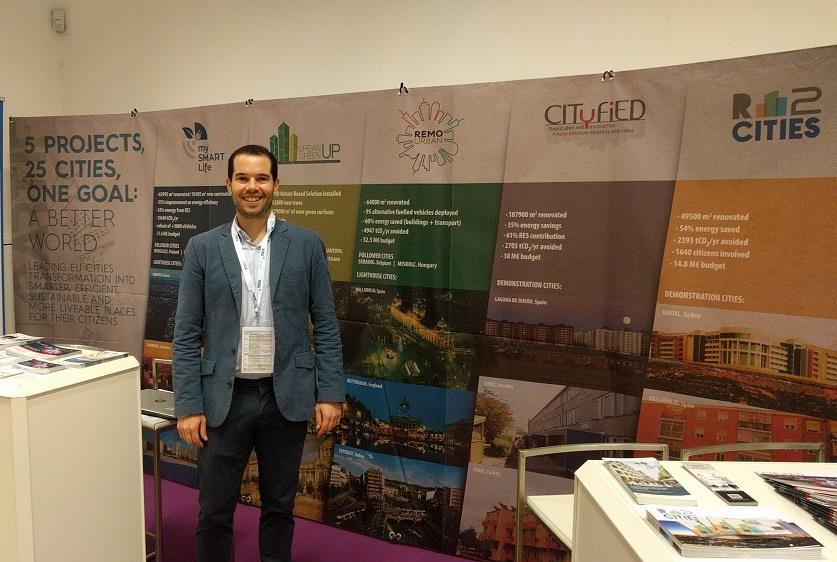As awareness grows about the need to live more sustainably, policy action towards "greening" our towns and cities is also more intense. Buildings for example consume up to 40% of all the energy used in the EU, so a lot is at stake. However, energy efficiency measures need to be integrated into "the bigger picture" of the urban environment, which includes ICT, mobility, citizen engagement and governance.
Ali Vasallo Belver has coordinated the smart city project CITyFiED, which is crossing the finish line. As a specialist in industrial engineering and building structures at Fundación Cartif, Spain, he has overseen three district renovations to demonstrate a pioneering integrated retrofitting strategy. They are located in Laguna de Duero-Valladolid (Spain), Soma (Turkey) and Lund (Sweden).

Ali Vasallo Belver
What have the specificities and challenges been in renovating the three demonstration districts?
CITyFiED delivered three pioneering district renovations involving technologies for building retrofitting, district heating and energy systems upgrades, smart grids, integration of renewable energy sources and monitoring platforms. Often, high investment costs and long payback periods are a challenge. Fortunately, the project was based on public-private partnerships, leading to sound business and financial models for overcoming this.
However, the social aspects have proven to be the biggest hurdle in all three districts. People don't always fully appreciate the benefits of retrofitting, and they tend to resist any disruption to their daily lives. This could have hampered overall progress. Therefore we informed and involved residents right from the start of the project, and we managed to win them over more easily and reduce disputes.
The outcome is the energy efficient retrofitting of 190,000 m2 of living space across 2,067 dwellings. Over 4,500 citizens were involved. Residents had their say on the renovation measures. Through this, we were able to address the technological and social aspects of each district in a methodical and systematic way. On average, CITyFiED has achieved 35% in energy savings and 61% in the use of renewable energy.
The project has a “city cluster” of 11 cities along with a wider “community of interest”, cities hoping to reap the projects' benefits. How has this helped boost replication of the CITyFiED urban ecosystem strategy?
Setting up the 11 cities cluster was a key objective as it is important to maximise the chances of the project benefits being replicated elsewhere. In addition, we have a 45-strong “community of interest” representing 19 countries. We could thus convey clear messages about the benefits of energy efficiency in the built environment to professionals, academics and citizens. This has enabled them to gain insights into not just buildings and energy systems, but also business models and social issues as these can lead to greater awareness about sustainability.
The city cluster's involvement and commitment have been crucial in developing a comprehensive and actionable replication model.
Can you provide concrete examples from these follower cities?
An example in this case is the set of suitable technologies identified to be implemented for each city, adjusting the model coming from the demonstration sites to the local conditions.
After performing a series of energy data collection sessions, workshops, study tours and interviews with the cluster cities, we successfully developed the 11 replication plans. These act as operational guides and go beyond simple awareness. It provides the cities with an all-encompassing replication plan.
The actual project is coming to an end, but its legacy should live on. How has the CITyFiED experience shaped policy action for the future?
From my point of view, involving ordinary citizens in a democratic process has been the most important aspect in district energy efficient renovations. This is a key feature of smart city projects. People thus get to participate in the life of their city, having a say in matters, sharing ideas and learning. Social acceptance and citizen engagement, through dialogue and discussion, should be central to any city-level project. Another important aspect is to understand the city, how it functions on a day-to-day basis and what its needs are, so tailored retrofitting projects can be delivered.
By Mark Thompson
30 January 2019